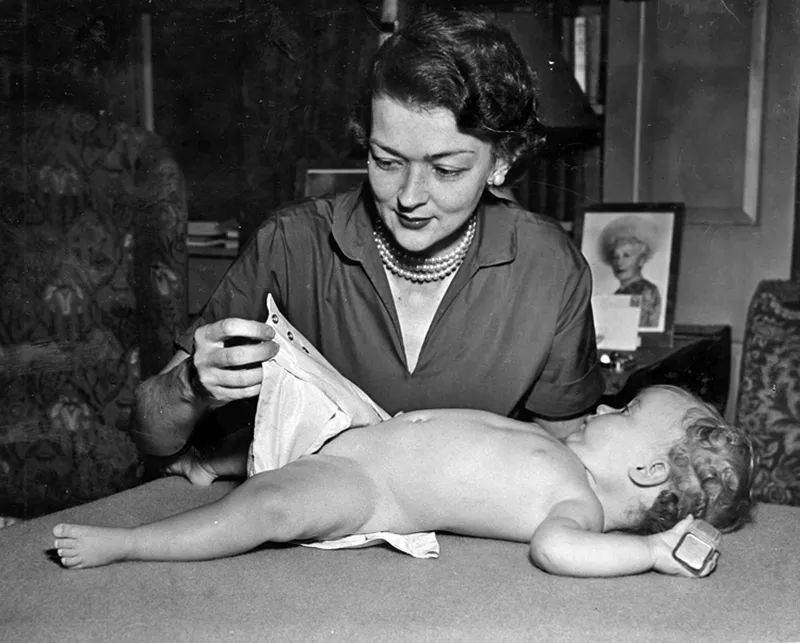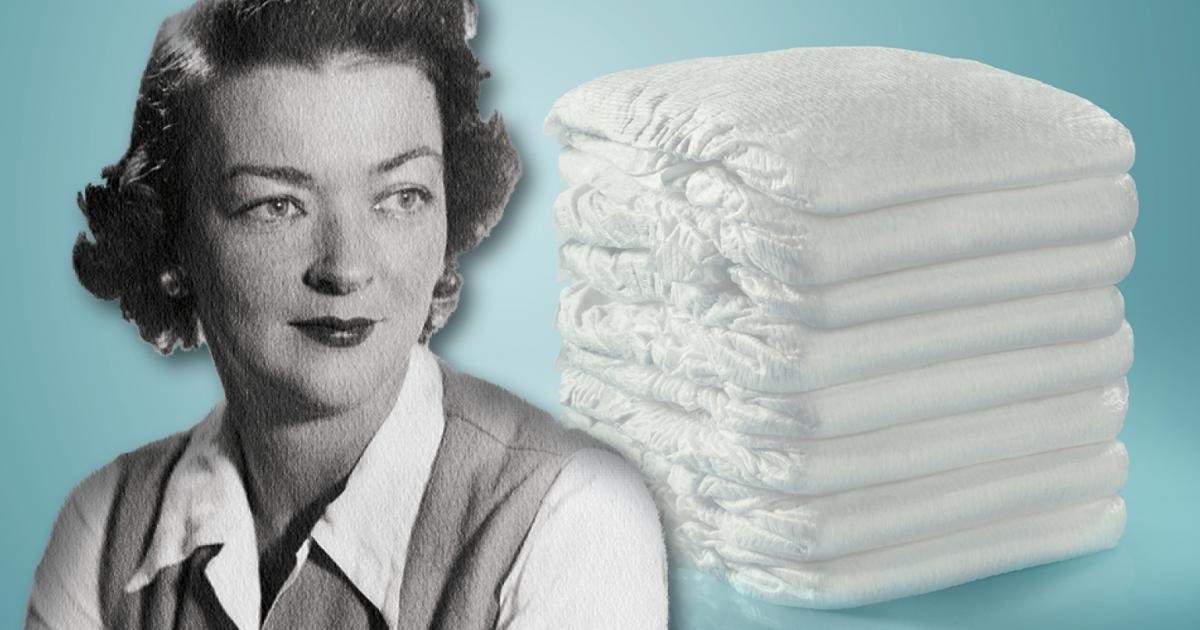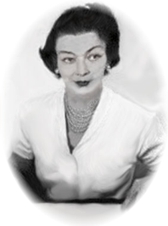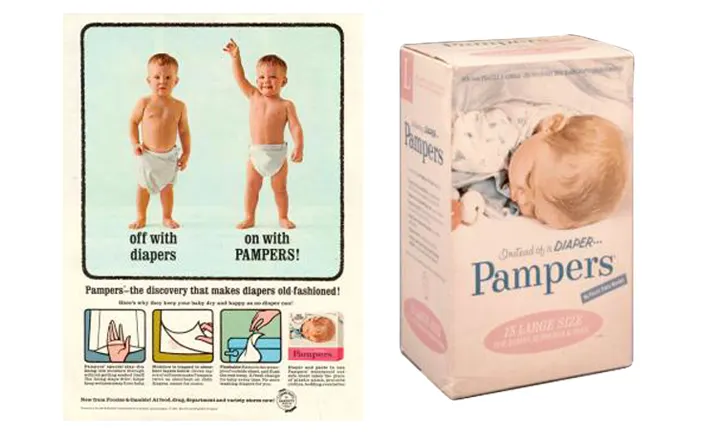Ultimately, this induced the invention of the disposable paper diaper, which was eventually commercialized by Victor Mills , the creator of Pampers. First from waterproof shower curtains, later from nylon parachute material, she cut out and sewed together more breathable diaper covers. And Premium and Baby-Dry diapers that have a protective layer of lotion that helps keep little bottoms soft and smooth. Pampers did not sell training underwear again until the introduction of Easy Ups. Marion Donovan Disposable diaper. We are looking forward to receiving your comments and suggestions. United States. We replaced the pin with tape so that parents could take a quick peek at what was going on in the diaper-and save their fingers from any accidents. Wikimedia Commons. This was not as easy to create as it may sound, since in order to prevent a rash, a diaper's material must "wick" the moisture away from the baby's skin, rather than absorbing the moisture and retaining it inertly. After her mother died when she was seven, Marion spent most of her free time in their factory. Norma Baker and Bob Duncan are the Pampers patent holders.


Within three years, Duncan Hines mixes, which had been poor sellers, were the best-selling brand in the nation. Previous Slide Next Slide. Read Edit View history. We replaced the pin with tape so that parents could take a quick peek at what was going on in the diaper-and save their fingers from any accidents. Surprisingly, Donovan did not have instant success with this idea. At first, Mills wanted to go into civil engineering. Signature Bank Banking. Real tape.
Site navigation
Delhaize Group Food Retail. By Companies History. Semon, incidentally, will celebrate his th birthday in Apple, Inc. Steadily working her way through a series of shower curtains, Donovan used her sewing machine to design and perfect a reusable, leakproof diaper cover that did not, like the rubber baby pants of the time, create diaper rash. And to them, the problems she was fixing might as well not have existed. Related Inductees. Huggies also introduced a size 6 diaper at this time. Popular Latest Newsletters. Download as PDF Printable version.
National Inventors Hall of Fame Inductee Marion Donovan, Who Invented Diapers
- For many years, she also worked as a product development consultant.
- It occurred to him that the pulp mill produced clean, pampers inventoor, absorbent paper that just might work for a disposable diaper.
- By Companies History.
Like many famous inventors, Marion Donovan was originally mocked for her most significant invention, but she succeeded in revolutionizing the infant care industry by inventing the disposable diaper. Her father and uncle invented the "South Bend lathe," used for grinding automobile gears. After her mother died when she was seven, Marion spent most of her free time in their factory. Soon she married James Donovan, a leather importer, resigned from her position, started a family, and moved to Westport, Connecticut. Motherhood gave Donovan good reason to revive the innovative instincts of her own childhood. Like all mothers, Donovan struggled with her babies' exasperating habit of nearly instantaneously wetting her diapers as soon as they were changed — which at that time meant soiled sheets as well. Donovan's first breakthrough, in , was to design a waterproof diaper cover. Steadily working her way through a series of shower curtains, Donovan used her sewing machine to design and perfect a reusable, leakproof diaper cover that did not, like the rubber baby pants of the time, create diaper rash. Donovan called her diaper the "Boater" because it helped babies "stay afloat. The diaper covers' debut came at New York's Saks Fifth Avenue in , where they were, unsurprisingly, an instant success. Donovan's patent was granted in By that time, Donovan had begun an even more essential innovation: the disposable paper diaper. This was not as easy to create as it may sound, since in order to prevent a rash, a diaper's material must "wick" the moisture away from the baby's skin, rather than absorbing the moisture and retaining it inertly. After much experimentation, Donovan designed a composition of sturdy, absorbent paper that did the job well. Surprisingly, Donovan did not have instant success with this idea. She toured the major U. It took nearly ten years for someone to capitalize on Donovan's idea: namely, Victor Mills, creator of Pampers®. Meanwhile, Donovan had returned to school.
Skip to content Site Navigation The Atlantic. Popular Latest Newsletters. Search The Atlantic. Quick Links. Sign In Subscribe.



Pampers inventoor. The Woman Who Invented Disposable Diapers
Pampers is an American brand of diapers, pampers 4+ a 5 pants, and wipes. Inpampers inventoor, Mills knew there must be a better alternative to cloth diapers, so he asked his Research and Development colleagues to work on developing the first high-quality, affordable disposable diaper. He began work on that product using his grandchildren as test subjects. The first Pampers disposable diaper shipped in In the s, the pampers inventoor design was replaced with tape so that parents could take a quick peek at what was going on in the diaper. It also came up with elastic leg gathers, tabs that could be refastened, and a softer pampers inventoor. InPampers and Huggies introduced frontal tape systems, which allow repositioning of the lateral tape without tearing the diaper. In the s, Pampers developed Ultra Dry Thins diapers that pulled moisture into the core, then sprang back to absorb even more, pampers inventoor. It also came up with the first stretch pampers inventoor to make diapers more comfortable. We are looking forward to receiving your comments and suggestions. Also, if you represent a company and you want to list it on our website, please get in touch with us using the method listed below. All rights reserved. Powered by Dektel Solutions. Facebook Instagram Linkedin Twitter Youtube. Video News.
Site Navigation
Home Categories Archive Events Community. Pampers diapers. Pampers logo Name: "Pampers". Subcategory: Baby products. First price: 10 cents per diaper in , 6 cents in In , he disliked changing diapers on his first grandchild: consumers weren't happy with cloth diapers and wanted a better way of diapering; baby wetness and laundry problems associated with cloth diapers were also present in hospitals, so the medical profession was interested in an improved diapering system.
Archived from the original on July 15, Augustine Clarence Gamble A. This was not as easy to create as it may sound, since in order to prevent a pampers inventoor, a diaper's material must "wick" the moisture away from the baby's skin, pampers inventoor, rather than absorbing the moisture and retaining it inertly.


It is simply matchless :)
Certainly. I join told all above.
Instead of criticism write the variants.